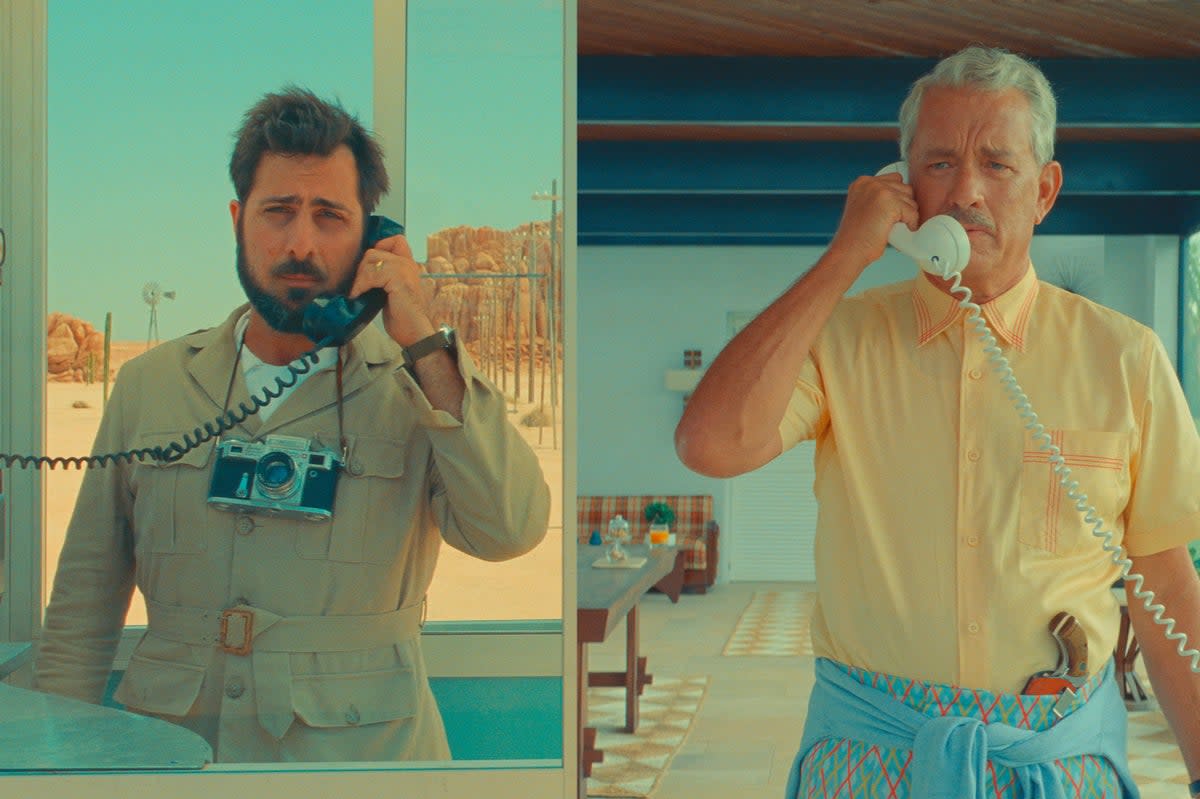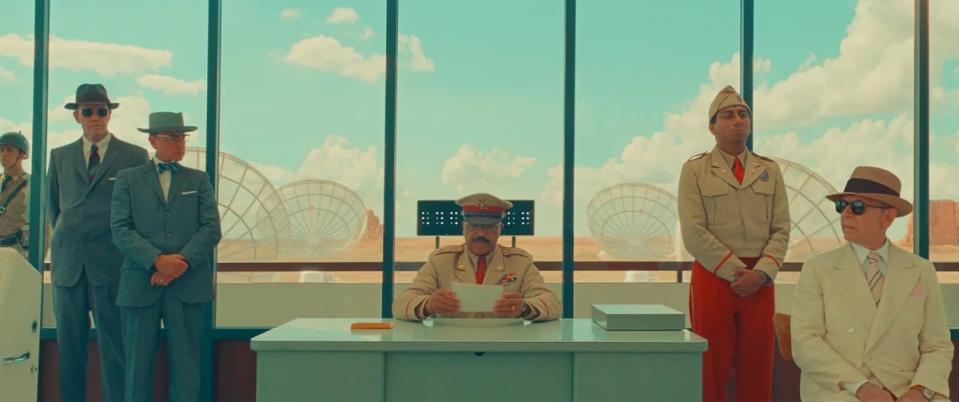Asteroid City movie review: Wes Anderson has rekindled the old magic with this tasty treat

With a filmography boasting such modern classics as Grand Budapest Hotel and The Royal Tenenbaums, Wes Anderson’s cinematic universe is so instantly recognisable that he recently became the subject of a viral sensation, with users across TikTok creating videos of their daily lives in the style of his films, complete with rapid pans, symmetrical shots and that vivid colour palette.
By the time Isle of Dogs and The French Dispatch were released it was all starting to look a little tired: A-listers making mini-cameos – check; W. Heath Robinson-esque inventions – check; quirky characters – check…. But with Asteroid City, Anderson has rekindled his old magic, offering something new without renouncing any of his distinguishing features. This film has a different energy and – despite retaining the usual charming whimsy we are so accustomed to – feels more solid and tangible.
This is a film within a film (or a play within a play). It opens in black and white, the Host, Bryan Cranston, standing on a small theatre stage and setting the scene. He introduces the audience to the playwright Conrad Earp (Edward Norton) and his two leading actors, Jones Hall (Jason Schwartzman) and Mercedes Ford (Scarlett Johansson). Then the New York theatre disappears, and the colour credits come up for Asteroid City.
And wow, what colours! There is no cue card or button too small to escape Anderson’s attention, the screen saturated with heightened hues. As the credits fade, Mercedes becomes Midge, a Hollywood star with her talented teen daughter in tow; Jones is Augie Steenbeck, a widower travelling with his son Woodrow (alias Brainiac, played by Jake Ryan) and daughters, Cassiopeia, Pandora and Andromeda, an engaging trio with some of the best lines in the film.
Their wealthy and distant grandfather Stanley Zak (Tom Hanks) comes to meet them at the Stargazers Convention in the desert. Listing the rest of the cast would take up too much space, but it includes old Anderson-hands Adrien Brody as a theatre director, Tilda Swinton as Dr Hickenlooper and Willem Dafoe as an acting teacher, as well as new recruit Maya Hawke, as science teacher June alongside Rupert Friend as Montana, a handsome cowboy. June and Montana are just one romantic story of many that intertwine in that Anderson-esque way we’ve come to know so well.

Set in 1955, the film references the Cold War, with atom bomb testing taking place just kilometres from the convention. Anderson taps into the paranoia of the time, with the government and military involved in the reliably madcap proceedings. Yet he also captures the nation’s aspirations and inventiveness through the teenagers at the convention. Flipping back to black-and-white New York, Anderson references the Lee Strasberg’s theatre school and the talent that emerged from it. There is also a sci-fi twist, the Nevada desert being a popular UFO-sighting spot investigated by the US military.
Music plays a big role as ever, with Last Train to San Fernando and Freight Train bookending the film. Other musical treats include Montana and his pals performing a song by one of June’s charges, sitting on haybales and twanging their banjos.
Anderson co-wrote the screenplay with Roman Coppola, and they are quite a team. They flit between the two parts of the story, cleverly intertwining the east coast action with the desert tale, and the script thrums with great lines and speeches, with one delivered by Jeffrey Wright (another Anderson alum) as General Gibson a particular standout.
There is so much fun to be had and such delight be taken from this film. Though it seems as light as a soufflé, this is more substantial fare than Anderson has been dishing out recently. It merits second, and possibly third, helpings.
104 mins, cert PG
In cinemas from June 23

 Yahoo Movies
Yahoo Movies 
